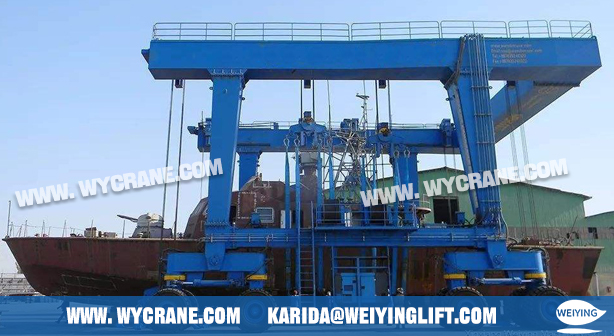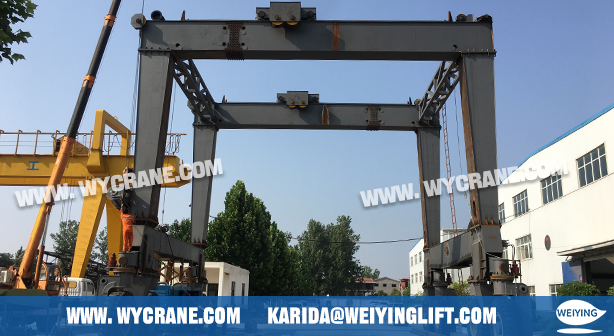Tandem lifting — the use of two or more cranes working together to lift a single load — is one of the most powerful techniques in modern heavy lifting. It enables operators to safely move oversized, long, or extremely heavy objects that a single crane could never handle alone.
This advanced lifting method is widely used across construction, steel fabrication, shipbuilding, and logistics, where efficiency and precision are critical. By combining the strength and control of multiple cranes, tandem lifting delivers greater capacity, improved stability, and higher safety on complex job sites.
However, tandem lifting is not just about power — it’s about coordination. To perform it safely, teams must rely on careful planning, skilled operators, and precise synchronization.
In this article, we’ll explore what tandem lifting is, why it’s used, its key benefits, potential risks, and the essential safety practices that make it one of the most effective solutions in the lifting industry.
Tandem lifting refers to the process of using two or more cranes simultaneously to lift a single load. Each crane supports part of the load’s total weight, allowing teams to move oversized or unusually shaped objects that exceed the capacity or stability limits of one crane alone.
This technique is often used for handling long beams, heavy machinery, prefabricated structures, bridge components, or ship sections. Because these loads are not only heavy but also uneven in shape, tandem lifting provides a balanced way to distribute weight and maintain control throughout the operation.
The success of tandem lifting depends on precise coordination — both cranes must move in perfect harmony to prevent dangerous tilting, twisting, or overloading on one side.
 |
 |
Tandem lifting is chosen when no single crane can safely manage the required lift. It’s a practical and efficient solution in many challenging industrial environments.
Common situations include:
Handling oversized loads that exceed one crane’s rated capacity.
Managing long or asymmetrical components that require support from multiple lifting points.
Working in restricted spaces where large cranes cannot be used.
Lifting in areas with unstable or uneven ground conditions where crane size and position are limited.
By combining the lifting power and reach of multiple cranes, tandem operations provide greater flexibility and enable project teams to complete difficult lifts safely and on schedule.
When planned and executed correctly, tandem lifting offers significant advantages for both performance and safety.
Using two cranes together allows teams to lift heavier loads than a single crane can manage.
For example, two 50-ton cranes may safely lift a load exceeding 80 tons when properly distributed and balanced. This expands lifting capability without requiring a much larger, more expensive crane.
Tandem lifting provides better stability and balance when handling long, awkward, or unevenly shaped items such as beams, pipes, or structural modules.
Each crane controls a portion of the load, reducing the stress on slings, hooks, and other lifting components.
With correct planning, tandem lifting can actually be safer than attempting to lift with a single, overloaded crane.
By distributing the load evenly, the system reduces mechanical stress and the likelihood of tipping, snapping, or mechanical failure.
Tandem lifting offers flexibility in confined or challenging environments.
When space or ground conditions limit crane size or positioning, using two smaller cranes can accomplish the task more efficiently than one large one.
Despite its advantages, tandem lifting also introduces unique challenges and risks that must be managed carefully.
If the load is not evenly distributed, one crane may bear more weight than intended, potentially leading to mechanical failure or tip-over. Precise weight calculations and balance are critical before starting the lift.
If cranes move out of sync or if the load swings unexpectedly, side loading can occur. This puts dangerous stress on the crane’s structure and can cause instability or collapse.
When lifting objects with irregular shapes or shifting centers of gravity, maintaining stability becomes more complex. Continuous monitoring and adjustment are necessary throughout the operation.
Tandem lifts must be supervised by a qualified person with extensive experience. Inadequate planning or untrained personnel can quickly turn a complex lift into a hazardous situation.
Because tandem lifting involves multiple cranes, precise planning and coordination are essential.To ensure a safe and successful operation, several key steps must be followed.
Every tandem lift must begin with a comprehensive lifting plan.
This includes:
The total weight and center of gravity of the load
Load distribution between cranes
Crane positioning and configuration
Lifting sequence and communication procedures
The plan should also outline potential hazards and the steps to mitigate them.
Tandem lifting should only be carried out under the supervision of a qualified person — someone who understands crane dynamics, load charts, and safety standards.
All involved team members, including operators and riggers, must be properly trained and experienced in multi-crane operations.
Coordination is the key to safety.
Both cranes must move in perfect synchronization during every stage of the lift — hoisting, slewing, and lowering.Even small differences in movement can cause instability, twisting, or mechanical stress.
To achieve this, many modern cranes use synchronized control systems that automatically balance load distribution and movement, minimizing human error.
Effective communication between operators and ground crews is vital.Radio communication or hand signals must be agreed upon in advance, and one designated lead operator should be responsible for giving commands.
This ensures that all actions are consistent and predictable throughout the lift.
With advancements in control systems and automation, tandem lifting has become safer and more precise than ever.
Modern cranes can be equipped with load monitoring systems, automatic synchronization, and real-time feedback that help operators coordinate complex lifts.
These smart features not only improve safety but also enhance efficiency, reducing the margin for human error and ensuring a smoother lifting process.
Tandem lifting is a powerful and versatile technique that enables cranes to handle loads beyond the capacity or stability limits of a single machine.
When executed correctly, it offers significant benefits — increased lifting power, improved stability, enhanced safety, and greater flexibility in complex environments.
However, tandem lifting also carries serious risks if performed without proper planning, skilled supervision, and effective communication.
With 34 years of manufacturing experience and 12 years of export expertise, we have built a dual advantage of professional qualifications and a global presence. Our business covers more than 100 countries and regions across Asia, Europe, the Americas, Africa, and Oceania. We are certified under the ISO management system and hold CE product certifications. Our main product lines include six major series—electric hoists, electric winches, gantry cranes, bridge cranes, marine cranes, and portal cranes—comprising nearly 100 different models.
If you want to learn more, please contact us.
E-mail address: karida@weiyinglift.com
Website: www.wycrane.com